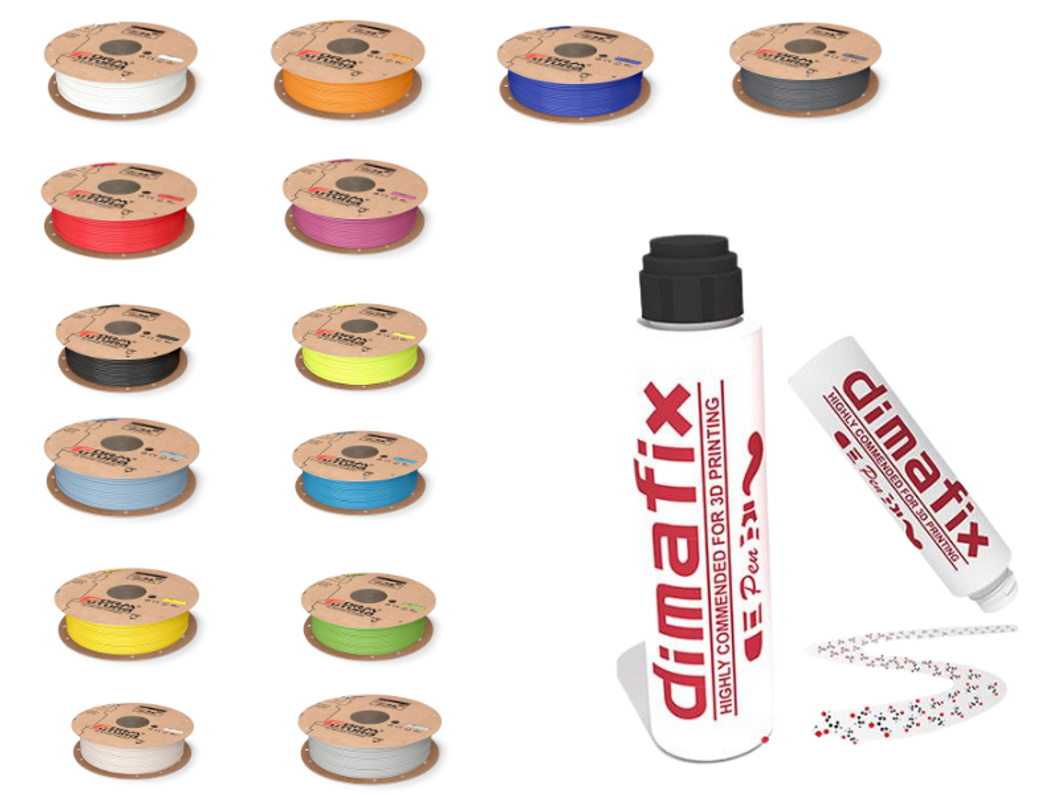Top Reasons FDM 3D Prints Warp – With Solutions
Print warping is one of the biggest issues for FDM printer owners. Whether your filament is failing to adhere right from the all-important initial layer, or whether your print has curled off the bed halfway through an overnight print – warping is the quickest way to ruin an otherwise flawless print.
The good news is that it’s a common, well-vetted problem, and we’ll cover two things below:
1) Why warping happens
2) And how to ensure it doesn’t happen again
Why Do 3D Prints Warp? The Most Common Problems and Solutions
It’s happened to all of us, but why do 3D prints warp? There are five core reasons behind FDM prints warping.
The Problem: Bed-Levelling
Let’s start with the fundamentals. An unlevelled print bed will mean that the distance between the nozzle and the bed is either too great for effective adhesion to occur, or not great enough to prevent the nozzle stripping away its own progress as it passes over deposited filament.
Solution: Level Your Bed
This one is straightforward enough. Level your print bed using a business card or other small piece of paper, according to your manufacturer’s recommended settings. Watch your prints on their initial layer. Determine if there are any very thin or faint lines (an indication that the nozzle is too close to the bed) or if prints are struggling to adhere (an indication that the nozzle may be too far off the print bed).
The Problem: PLA or Material Type
Some filaments simply stick to the bed better than others. This is true across the different material types where the differences are more radical – such as between PLA, ABS, PETG and TPU – but also among individual manufacturer’s different takes and iterations of these filament types. For example, regular PLA, tougher PLA or high-end PLAs will adhere differently.
The Solution: Higher-End Anti-Warping PLA
Regular PLA is actually among the easiest filaments to print with. That said, some filament is geared towards warping prevention entirely. If you haven’t tried the Easyfil PLA Range, it will likely solve all your warping print woes just by making the switch.
This is becoming a fast favourite among hobbyists who wish to print larger investments like terrain, props, prototypes or sellable models that run a higher risk of peeling off the print bed over 10 hour+ print times. These kinds of prints are ruined if the print peels off the bed halfway through the print job, and consume significant time and materials to restart the process. They necessitate warp-prevention.
Premium PLAs like Easyfil have also been picked up by printers of smaller FDM prints where surface area puts strain on the filament’s ability to cool and solidify in time to adhere effectively. Speaking of which…
The Problem: Surface Area
You’ll likely have noticed that the smaller the surface area, the more likely the initial print layer fails to adhere to the print bed at all. It’s easy to forget that timing plays a crucial role in FDM printing. Filament is extruded at melting point as a liquid, and cools within microseconds of hitting the print bed to form solid plastic. This heating and cooling is part of the magic of what makes FDM printing work. A small surface area complicates the timing and tension of this cooling process and can result in improper bed adhesion.
Solution: Use Brims and Rafts
The easiest solution is to append a brim or a raft to the gcode of your print. You’ll do this during the slicing process in a program such as Cura.
Often, such programs have a simple checkbox you can check that will automatically add these additional layers for you.
What are they?
Brims and rafts increase the surface area of your print and essentially help anchor your print to the bed. Brims circle your print to help tether them around the edges, drastically reducing the chance the print itself warps.
Rafts have the added benefit of being an initial layer all on their own, often leaving the end result printed on top of them with a much smoother underside when you peel it off the raft. However, rafts consume more printing material. Brims are much lighter on resources.
The Problem: Thermal Expansion
Thermal expansion isn’t an inherent issue for 3D printing, in that it comes with the territory. Heated materials change dimension as their temperature raises and decreases. Extruded filament doesn’t escape this.
The extruded filament has been brought to melting point, exiting a hot-end that typically reaches 180 to 300 degrees Celsius. It makes impact with a print bed that is significantly cooler than this and that’s by design. The filament needs to cool on impact in order to solidify.
However, the difference in these temperatures making contact creates the perfect storm for tension and in turn warping.
The Solution: Print Bed Temperature and Enclosure
The simplest answer is that you want to regulate the temperature between the two opposite extremes of the melted filament extruding from the nozzle and the filament already deposited and cooled on the print bed. There are two ways to manage this.
The first is to adjust the temperature of the print bed itself. Increasing this temperature under the right specifications recommended for that PLA or other printing material can be of good assistance to offset the difference between the filament temperatures.
The second is to control the surrounding air temperature. This plays a direct role in what the deposited filament and print bed’s temperature will be. You can do this by buying or building your FDM printer an enclosure – if your 3D printer doesn’t already come with one.
The Problem: Print Bed Adhesion
At the end of the day, all warping, curling or peeling off the plate occur on the print bed. The material you use here weighs in heavily.
The Solution: Use a Fixative or Change Print Beds
There are several ways to improve print bed adhesion, which will assist the filament in sticking to the print bed as it extrudes.
As 3D printing emerged and still well into the present, FDM owners have relied on items like glue sticks and hairspray to assist with bed adhesion. This still works in moderate doses, as both of these sticky substances help filaments grip the bed. You will simply need to remember to clean your bed with soapy water periodically, as a build-up of glue or hairspray can impact the evenness of the initial layer. Remember, the nozzle starts off a hairline off the print bed. These can also impact the ease of removing your prints from the bed post-printing.
The more elegant solution now days is usinga fixative pen like DimaFix Adhesion , which is designed to create a strong bond between the first print layer and the build plate whenever the bed is set to a temperature above 60ºC. When the temperature lowers, such as when your 3D printer switches off after the printing process, Dimafex becomes inactive, allowing for easy removal of your prints.
It’s also worth noting that there are various different print bed types, with different advantages. For example, while glass print beds offer a smooth finish, they are notoriously difficult to adhere to. You’ll almost certainly be looking into a fixative.
So there you have it. The top reasons FDM prints warp, and how to prevent it.
If you need any further assistance with your 3D printing needs, get in touch with our team today.
Recent Posts
-
Why Every Office Needs Reliable IT Products
Let's be honest for a second—how often do we think about the stuff on our desks daily? The pr …21st Apr 2025 -
Mastering 3D Printing Filaments for Superior Results | Austic Shop
3D printing filament synonyms with thermoplastic feedstock for fused deposition modelling 3D printer …17th Apr 2025 -
Best Computer Screens for Home and Office
Computer display screens, often referred to simply as monitors, have undergone a remarkable evolutio …27th Dec 2023

 FREE SHIPPING ON ORDER OVER $75
FREE SHIPPING ON ORDER OVER $75
 LOYALTY PROGRAM
LOYALTY PROGRAM
 SHIPPING WORLDWIDE
SHIPPING WORLDWIDE



